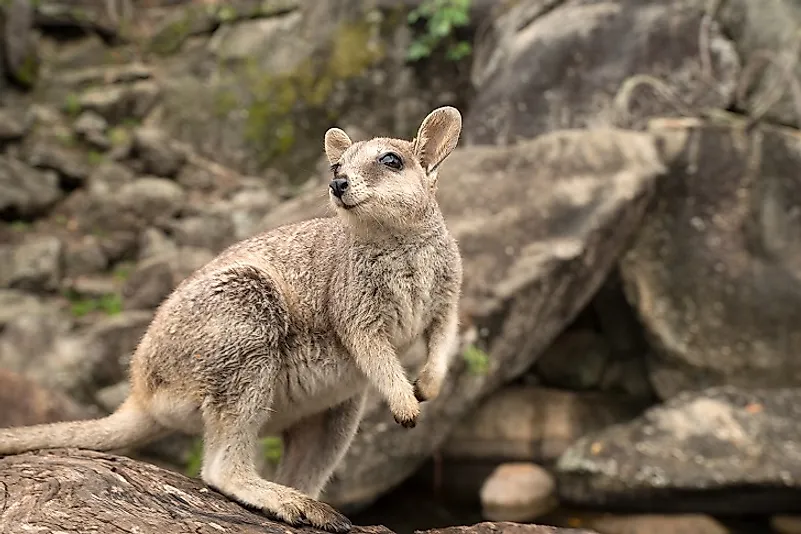Wallaby Facts: Animals of Oceania

5. Physical Description
Wallabies are upright, Marsupial mammals that are mostly found to be found in Australia, as well as on the island of New Guinea. They are classified as part of the kangaroo family (Macropodidae), alongside pademelons, quokkas, kangaroos, and tree kangaroos. Marsupial females are animals who have pouches inside their midsection wherein they raise their young ones, otherwise known as joeys, for several months following what would amount to a premature birth in placental mammals (Eutherians). Wallabies are small- to medium-sized mammals equipped with powerful hind legs and an equally strong tail. The latter is used both for protection and balance, and this tail can grow to the same length as the rest of their bodies. Wallabies are known for their ability to bounce very fast, as well as leap to impressive heights, in an effort to protect themselves from predators, a feat that they’re able to accomplish thanks in large to their muscular hind legs.
4. Diet
Wallabies feed mainly on vegetables, grasses, and other plant food, such as the fruits, leaves, and roots of shrubbery found in their natural habitats. Adaptations that allow them to survive as herbivores include their elongated faces and jaw structure, as well as their huge flat teeth, which are designed primarily for chewing on tough vegetation. In the absence of fresh water holes, wallabies are able to drink sea water, something that only very few other animals can do. In climates and environments where water is not readily available, these marsupial mammals can still get sufficient fluids from the succulent plants and vegetables that they eat. Those in captivity are typically fed with fruits and vegetables commonly found in gardens and farms, such as apples, sweet potatoes, carrots, and hay.
3. Habitat and Range
Wallabies are indigenous to the continent of Australia, as well as the remote, heavily wooded, and semi-arid regions of New Guinea. Introduced populations have been frequently sighted in such countries as Ireland, Hawaii, New Zealand, and Scotland, especially in the upper regions and remote islands of the latter. At present, several subspecies of Wallabies are classified as either "Vulnerable" or "Endangered" by the International Union for the Conservation of Nature's Red List of Threatened Species. In fact, four have already become "Extinct" due to the destruction of their natural habitats, pollution, and irresponsible urbanization which has driven these marsupials into roads, highways ,and closer to their predators’ lairs, being forced into closer proximity to the wild dogs, feral cats, and foxes they are hunted by.
2. Behavior
Wallabies prefer to forage for food and live alone, and can hardly be considered sociable. One exception to this generality is seen in females of the Wallaby species when they are tasked with carrying and raising their young in their pouch from birth through their joeys' first several months of life. The larger species of Wallabies have been observed to be mostly active during the day and have a tendency to reside in groups, or "mobs", composed of 50 or so individuals. The smaller species,, on the other hand are predominantly nocturnal, and have the tendency to live especially solitary lives. Wallabies protect their homes and territories using their powerfully-built tails and hind legs, and are able to display aggressive behavior when threatened. Males also will fight with one another, especially when preening for females, although experts have observed that such fights are rarely fatal, nor do they typically inflict lasting injuries.
1. Reproduction
Wallabies breed during the months of January and February, which is during summer in the Southern Hemisphere. The Wallabies' gestation period lasts about 28 days, after which time the females give birth to just one young one, called a "joey". For around two months thereafter, a joey will stay inside its mother’s pouch, where it continues to grow and develop. In those rare instances when a mother wallaby gets pregnant while another joey is still residing in her pouch, an interesting phenomenon occurs which is known as “embryonic diapause”. During this period, development of the unborn young is postponed until such time that the older joey has left its mother’s pouch.











